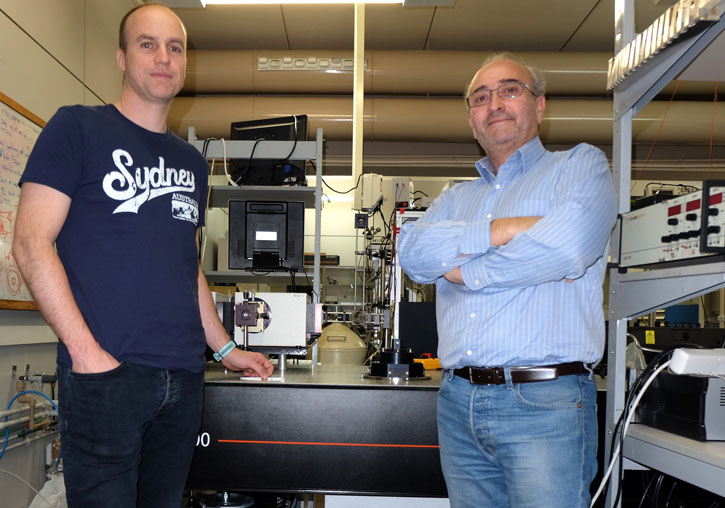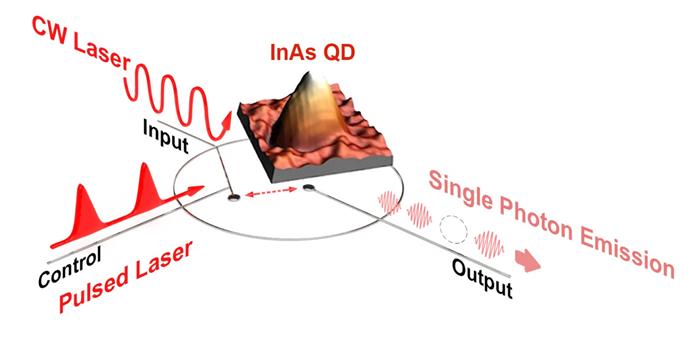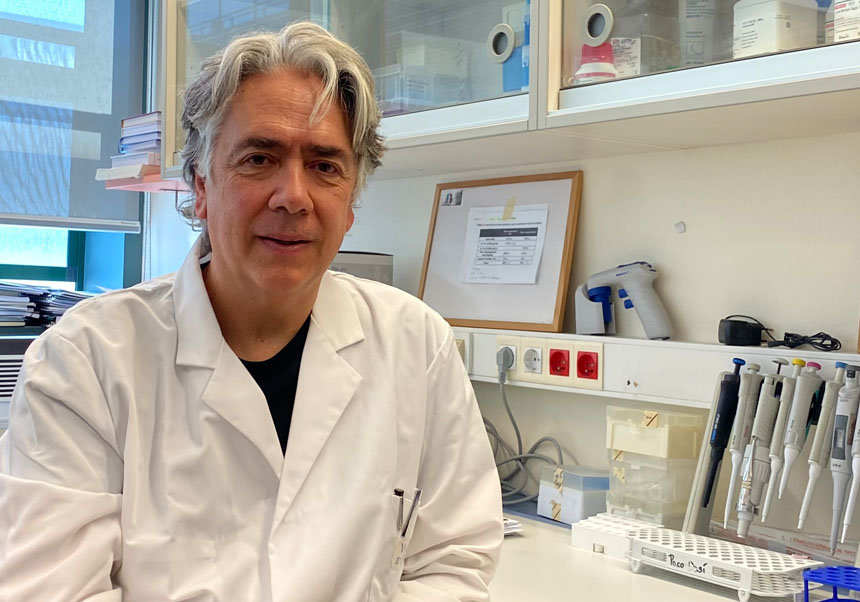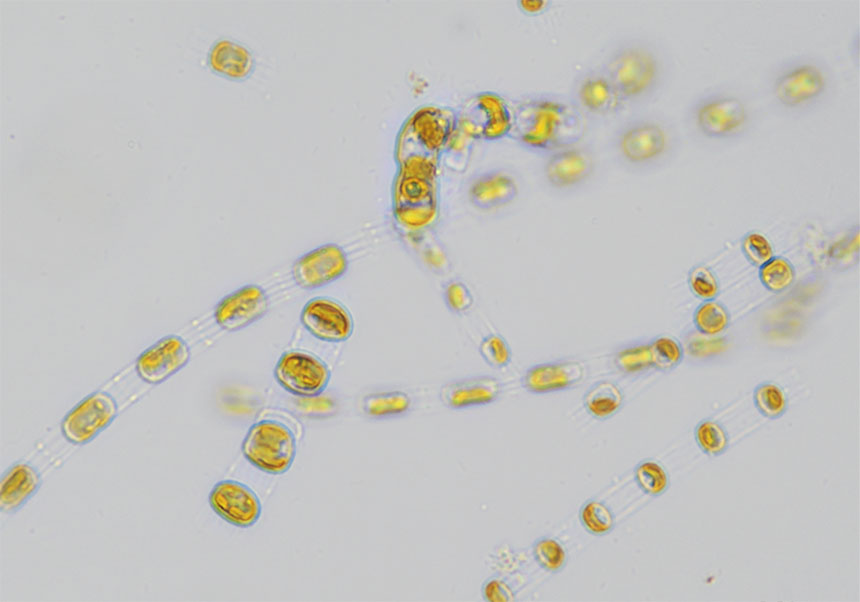A new type of multiplatform photon switch for application in quantum technology is designed and developed
- Scientific Culture and Innovation Unit
- February 5th, 2020

An international team led by the Institute of Material Science (ICMUV) of the University of Valencia has developed an optical (quantum) switch that modifies the emission properties of photons, the particles of electromagnetic radiation. The new device works with ultra-fast switching times and very low energy consumption and, in comparison to other designs, it can be implemented in a variety of semiconductor platforms, of great application in current quantum technologies.
The team coordinated by Guillermo Muñoz Matutano, recently reinstated to ICMUV, has published in the journal Communications Physics, of the Nature Publishing Group, the design, building, experimental measurement and simulation of this photon switch.
The operation principle of the device is based on the nanostructured semiconductor quantum confinement technology, which are small structures of nanometric size capable of absorbing and emitting light. The optical properties of these materials, called quantum dots, are similar to those of isolated atoms and their emission of light occurs photon to photon. They are very interesting for developing quantum technologies, since isolated photons or pairs of photons can be used to reproduce overlapping or entanglement states.
At present, one of the scientific and technological challenges in this field is directed towards the development of logic gates and optical circuits that can perform operations with photons, and in this way work and modify the information under the quantum description. Therefore, tools and materials that can affect the emission of photons individually are necessary. Of all of them, those who manipulate and control photons using light are very interesting, since chained systems can be built or they can represent large reductions in energy consumption. This is the case of all-optical devices.
The main idea of the work came about through a collaboration with the researcher Massimo Gurioli, from the University of Florence and the European Nonlinear Spectroscopy Laboratory. Under this collaboration the processes of accumulation and saturation of the charge in quantum dots of indium arsenide (InAs) were studied according to the power and colour of the lighting laser.
One of the outstanding properties of the new device is that next to the temporary switching, a switching of the colour of the emitted photon (its wavelength) can be added if two different lasers are used. This quality allows us to think of devices for multiplexing photons by wavelength (combining two or more channels of information in a transmission medium), so that each colour of the photon is associated with one of these channels. Finally, the physical principle by which the device operates is fulfilled by many other quantum confinement nanostructures, so this new design represents a general scheme that can be implemented in a wide variety of semiconductor platforms.
The research carried out by a network of universities includes the Optoelectronic Materials and Devices Unit (UMDO) of the ICMUV, led by Juan P. Martínez Pastor, Professor of the Department of Applied Physics and Electromagnetism. The main materials of the device were manufactured by the group of Luca Saravalli, a researcher at the Italian CNR, while the simulation of its operation was carried out through a collaboration with Mattias Johnsson and Thomas Volz, of the ARC Engineered Quantum Systems (EQUS) of Australia, where Guillermo Muñoz has worked as a senior researcher for the past 3 years.
Guillermo Muñoz is a main investigator of the project “Photonic points with two-dimensional semiconductors”, funded by the latest call for R + D + i Projects “Research Challenges” corresponding to the State R + D + i Program Oriented to the Challenges of Society. The objective of this project is to develop new optoelectronic devices within the scope of the new quantum technologies based on semiconductors of low dimensionality.
Article:
G. Muñoz-Matutano, M. Johnsson, J. Martínez-Pastor et al. “All optical switching of a single photon stream by excitonic depletion”. Commun Phys 3, 29 (2020). DOI https://doi.org/10.1038/s42005-020-0292-8
Link: https://www.nature.com/articles/s42005-020-0292-8
Optoelectronic Materials and Devices Unit research group:
Photo caption:
- Artistic interpretation of the operation of the all-optical photon switch. A first laser (cw) pumps a semiconductor quantum dot. A second pulsed laser acts as a control signal. When this second laser reaches the quantum point, the device inhibits the emission of a photon.



















